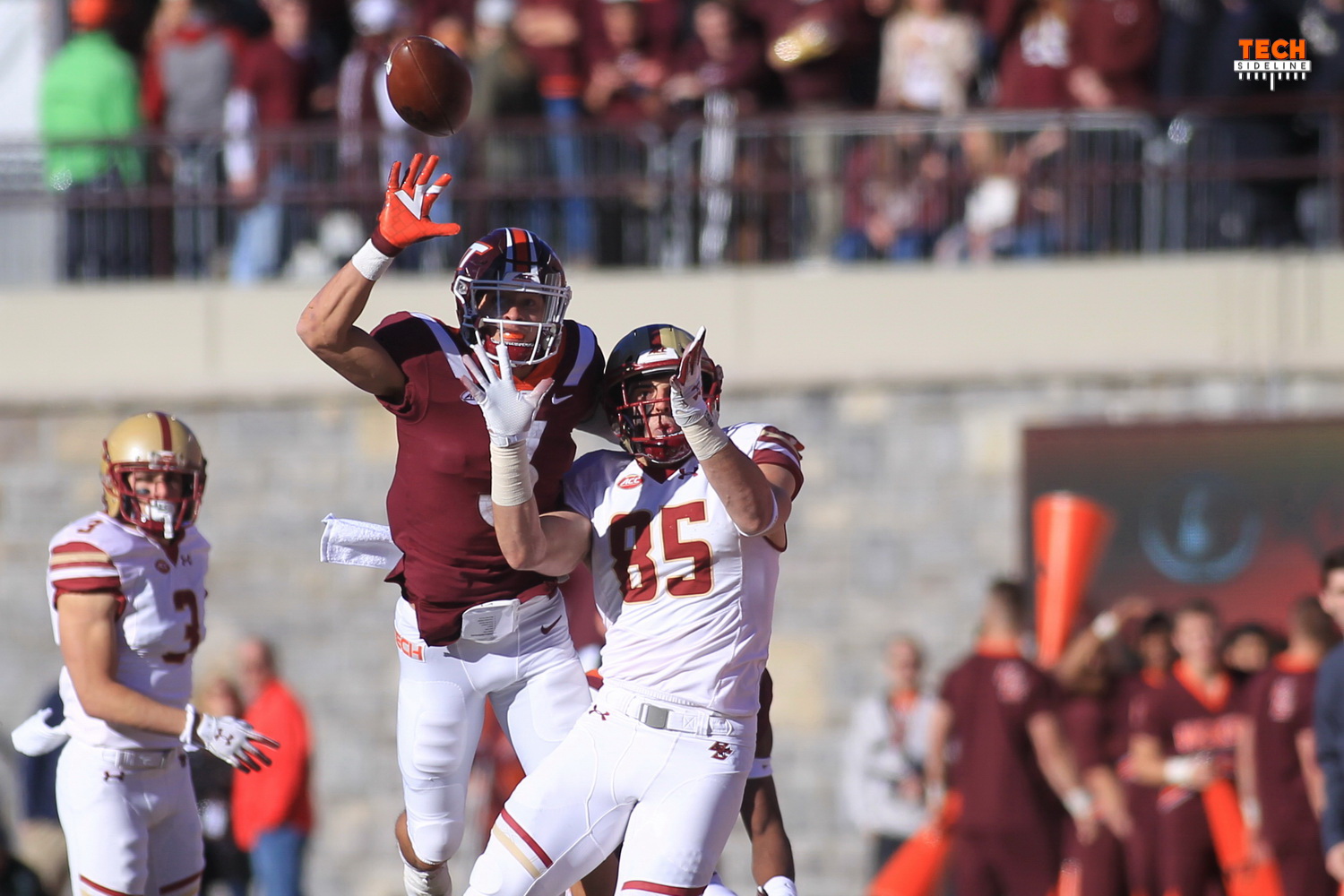
There are a lot of narratives for this game. “The defense played well enough to win.” “Tech struggles to score in the third quarter.” “Offense has regressed the past two years.” Coach Fuente offered one in the post-game:
“Boston College made a decision about maybe halfway through the second quarter and into the second half to stop blitzing, stop moving and play base defense—two-high. And we came out in the second half and tried to run the ball into it and did not run the ball well, so there’s your adjustments…they didn’t do anything spectacular, but they’re big and physical up front and we couldn’t run the ball in there.”
I don’t have definitive appraisals of the offensive narratives, but I’ll focus on them because that’s where the concerns are right now. Sure, there are obvious reasons why Tech’s offense struggled. BC’s front seven played better than whoever Tech lined up in the box. Quarterbacks and receivers went from making amazing plays to missing the important ones and botching the mundane. Unpacking the reasons into something meaningful is the hard part, and I’ll tell you right now I haven’t gotten to that point yet. So fair warning, this might be more hemming and hawing than some of you will enjoy.
Let’s dig into Fuente’s quote. The “blitzing” and “moving” refers not just to blitzes and stems, but to rotating safeties after the snap (more on this below.) Two-high is a reference to where the safeties are located at the snap—there are two of them located ten or more yards away from the line of scrimmage, usually each at or near one hash or the other. Cover-2 is the defense most people think of when it comes to two-high coverage.
...Subscribe to read full story
Tired of low effort articles and clickbait? So are we. Subscribe to read great articles written by a full-time staff with decades of experience.
Already a subscriber? Login Here



